MARIANI’S
Virtual
Gourmet
November
27, 2016
NEWSLETTER
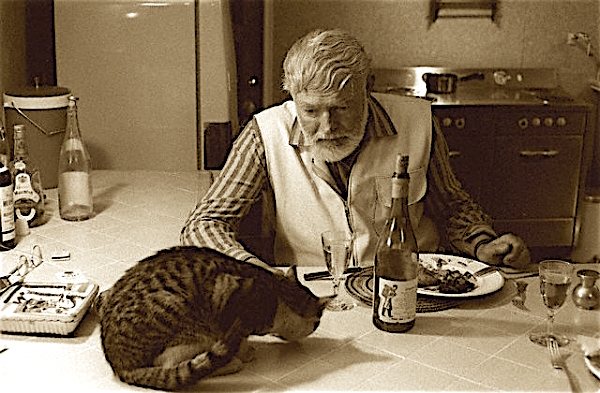
Ernest
Hemingway and his cat in Key West, Florida
IN THIS ISSUE
NEW ORLEANS, Part Two
By John Mariani
NEW YORK CORNER
Günther Seeger
By John Mariani
NOTES FROM THE WINE CELLAR
MIKE GRGICH, PIONEER
By Mort Hochstein
❖❖❖

ANNOUNCEMENT: There will be no issue of Mariani's Virtual Gourmet next week (Dec. 4) because Mariani will be off in Eastern Europe seeking to find the best Austrian, Czech, Slovakian, and Hungarian food and hotels for his readers, and to buy a sturdy pair of lederhosen.
The next issue will be Dec. 11.
❖❖❖
NEW ORLEANS DINING
Part Two
By John Mariani
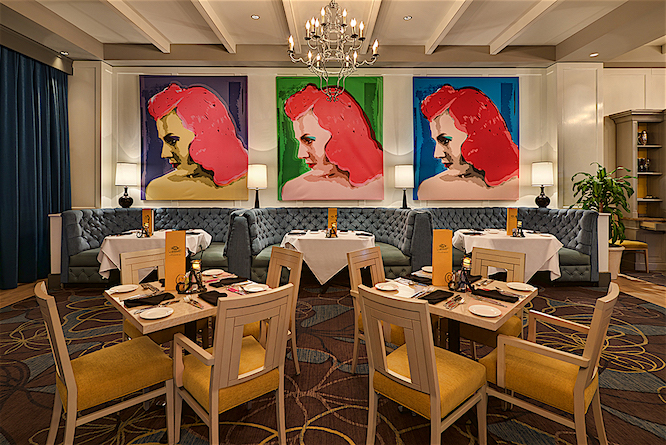
CAFÉ ADELAIDE
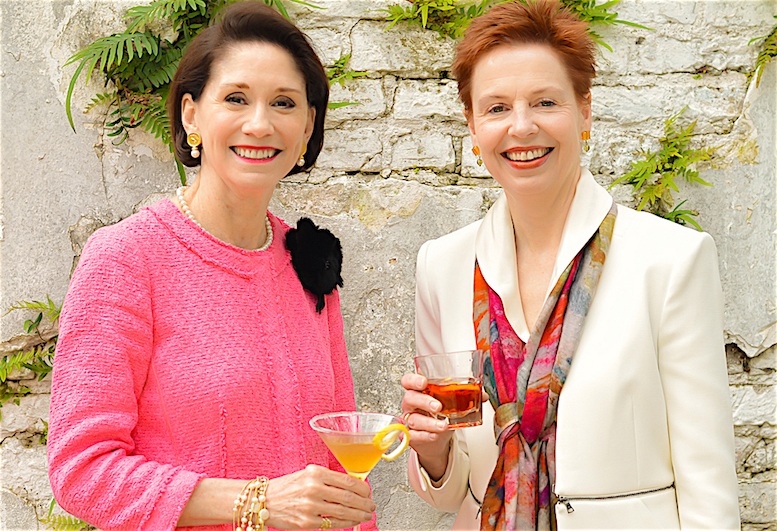 CAFÉ
ADELAIDE
CAFÉ
ADELAIDE
Loew's New Orleans Hotel
300 Poydras Street
504-595-3305
The Adelaide in
question is one of the Big Easy’s legendary
grande dames, Adelaide Brennan, aka "Queenie"
and "Auntie Mame,” described by her family as "a
striking redhead who marched to her own
drummer.” Her favorite saying was, "Sparkle
plenty." She's painted into the triptych above,
for she must have had the joie de vivre of three
people. 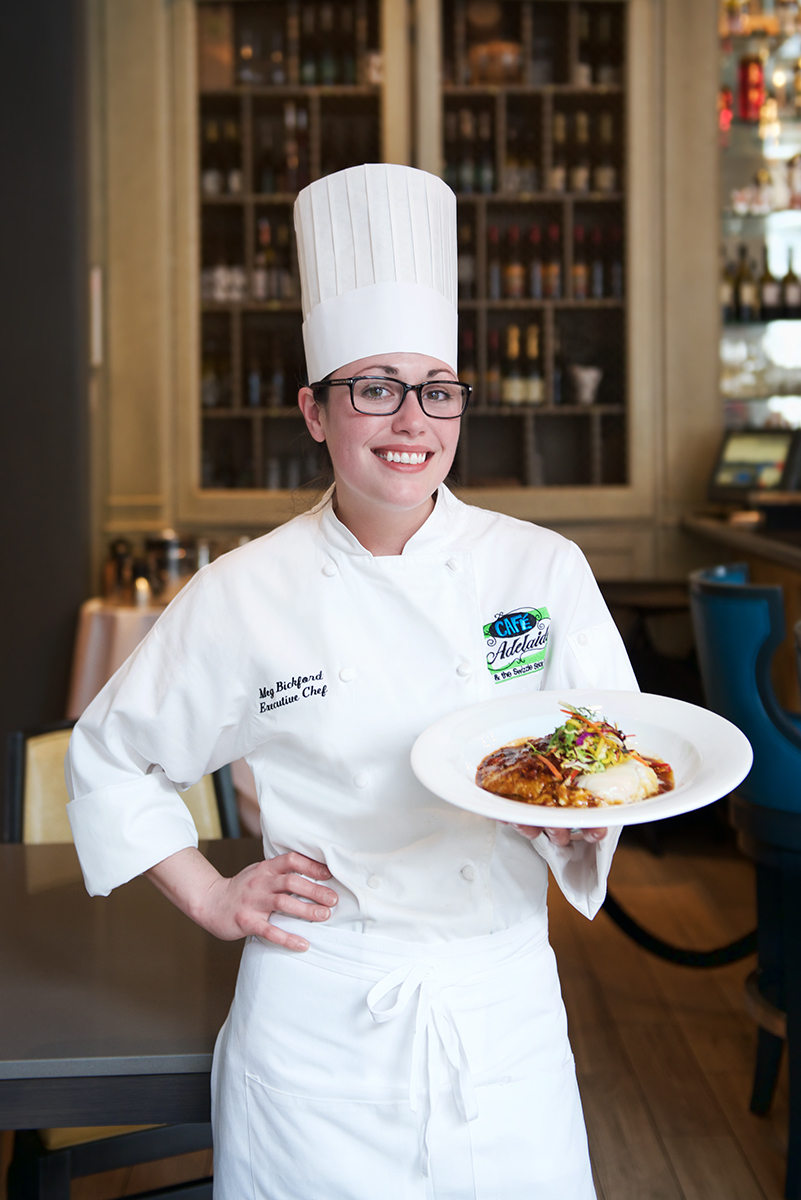
Lally Brennan and Ti Adelaide
Martin (above),
who share much of their aunt’s irresistible
exuberance, opened this tribute to her with verve.
Café Adelaide has certainly won its bona fides in
a post-Katrina world, though you don’t hear as
much about it as some of the other Big Deals in
town, including the Brennans' own Commander’s
Palace. Still,
it’s a big colorful room with striking artwork,
the effervescent bonhomie of New Orleans
waitstaffs, and, now, a new young chef, Meg
Bickford (right),
a rare woman in a top kitchen position, who has
brought the restaurant even further into the
city’s high firmament.
While maintaining Café Adelaide
favorites like white shrimp remoulade on celeriac
slaw ($12), Commander’s turtle soup ($8.50) and
“Duck, duck, duck…” with sugar-cured duck ham,
confit salad with dried cherries and blackberry
duck fat vinaigrette ($27), she has added dishes
that are among the most inventive and admired in
the city, starting with her Poor Man’s Foie Gras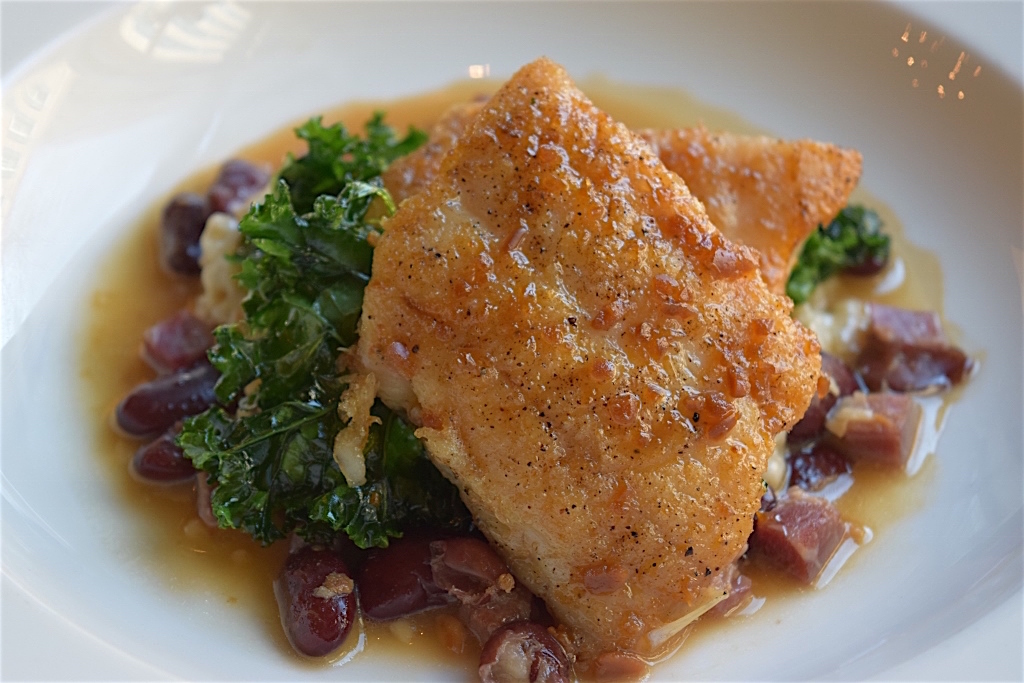 of creamy
chicken liver pâté with blueberry-sherry jelly,
hot boudin beignets, spicy mustard, sourdough
bread and
pickled “stuff” ($16). Her New Orleans East Style
BBQ Shrimp & Grits includes seared wild white
shrimp over crab boil kimchi, charred chilies,
pork belly and creamy stone ground grits with a
spicy Asian style barbeque glaze ($24), and she
really ups the ante on salads with her Louisiana
blue crab and heirloom tomato salad with
mozzarella, lemon oil and a cherry balsamic dusted
with herbs ($8.50).
of creamy
chicken liver pâté with blueberry-sherry jelly,
hot boudin beignets, spicy mustard, sourdough
bread and
pickled “stuff” ($16). Her New Orleans East Style
BBQ Shrimp & Grits includes seared wild white
shrimp over crab boil kimchi, charred chilies,
pork belly and creamy stone ground grits with a
spicy Asian style barbeque glaze ($24), and she
really ups the ante on salads with her Louisiana
blue crab and heirloom tomato salad with
mozzarella, lemon oil and a cherry balsamic dusted
with herbs ($8.50).
Don’t
fill up—portions are large—because you need room
for the superlative Creole cheesecake
with blackberry sugar cane syrup and the white
chocolate biscuit pudding with candied pecans and
white chocolate ice cream.
If you want to know what the
expression “let the good times roll” means, you’ll
find it at a dinner table at Café Adelaide.
Open for
breakfast daily; lunch Mon.-Fri.; dinner
nightly.
REDFISH GRILL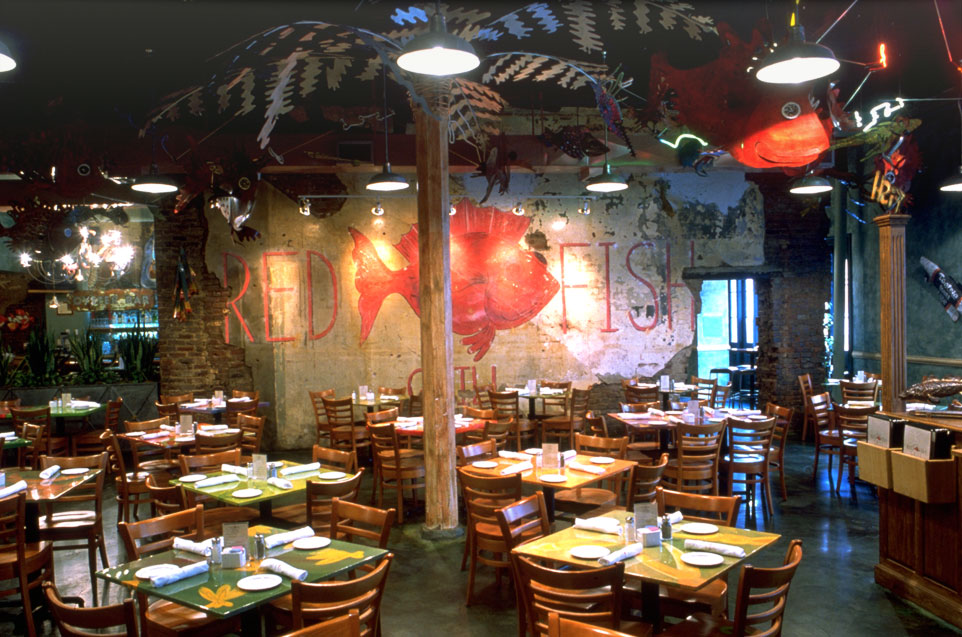
115 Bourbon Street
504-
598-1200
It is high praise to say of a
restaurant, “I’ve never had a bad meal there,”
which can apply to the grandest of haute cuisine
restaurants as much as to storefront eateries. Redfish
Grill is that kind of a casual place where every
dish belongs on this menu of traditional and
modern Creole cookery.
Ralph Brennan is one of several
family members of the Brennan clan who separately
run restaurants in and out of New Orleans,
including Brennan's on Royal Street, profiled last
week. This is a far more homey place with a canny
road-house look of peeling brick walls, folkloric
murals, and a funky fake palm tree in the middle
of the dining room.
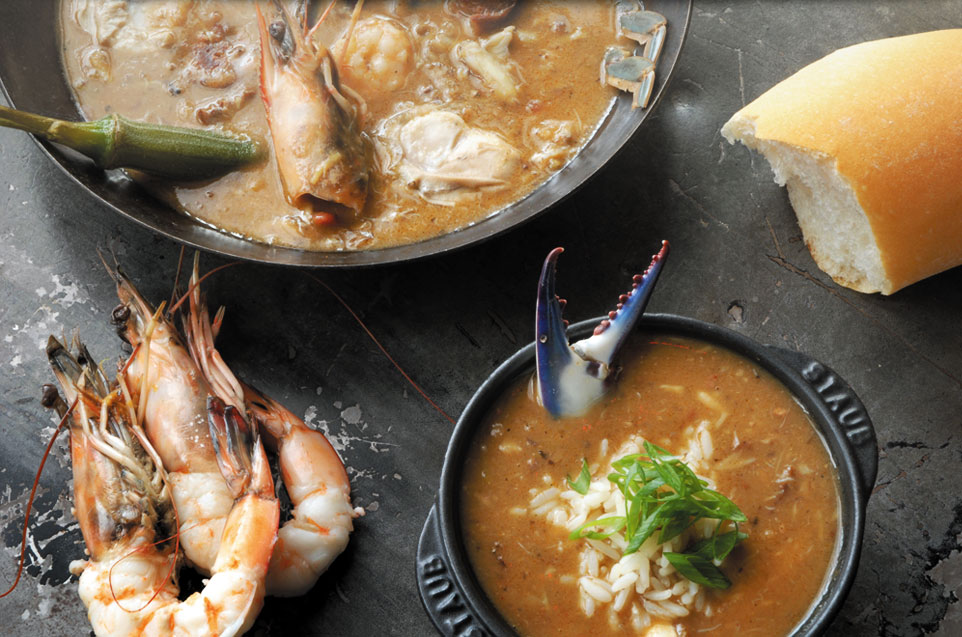 Best way to
go is with Chef Austin Kirzner’s seafood sampler: barbecued
crab claws; alligator boudin balls with peach
pepper jelly; and Creole fresh Gulf shrimp with
red pepper and onions ($29.95). There
are plenty of oyster offerings, of course, and the
Redfish bisque ($7) and alligator sausage and
seafood gumbo ($8.50) are as good as any in the
city. The
crabcakes are made with true sweet lump crabmeat
($28), and shrimp
and grits are lavished with parmesan cheese,
roasted tomatoes, fried okra and a jalapeño
buttermilk ranch dressing ($25).
Best way to
go is with Chef Austin Kirzner’s seafood sampler: barbecued
crab claws; alligator boudin balls with peach
pepper jelly; and Creole fresh Gulf shrimp with
red pepper and onions ($29.95). There
are plenty of oyster offerings, of course, and the
Redfish bisque ($7) and alligator sausage and
seafood gumbo ($8.50) are as good as any in the
city. The
crabcakes are made with true sweet lump crabmeat
($28), and shrimp
and grits are lavished with parmesan cheese,
roasted tomatoes, fried okra and a jalapeño
buttermilk ranch dressing ($25).
Otherwise, stay
simple with any of a dozen local fish ($21-$34)
cooked over a wood-fired grill, with a selection
of six sauces.
Then finish off with double chocolate bread
pudding ($9.50) or a bourbon-laced pecan pie
($8.50); there’s also a bananas foster ice cream
cake with rum ice cream flamed tableside ($9).
I could
eat here three times a week and take a couple of
months to go through the menu, and it would always
be with enormous pleasure.
Open
for lunch & dinner daily.
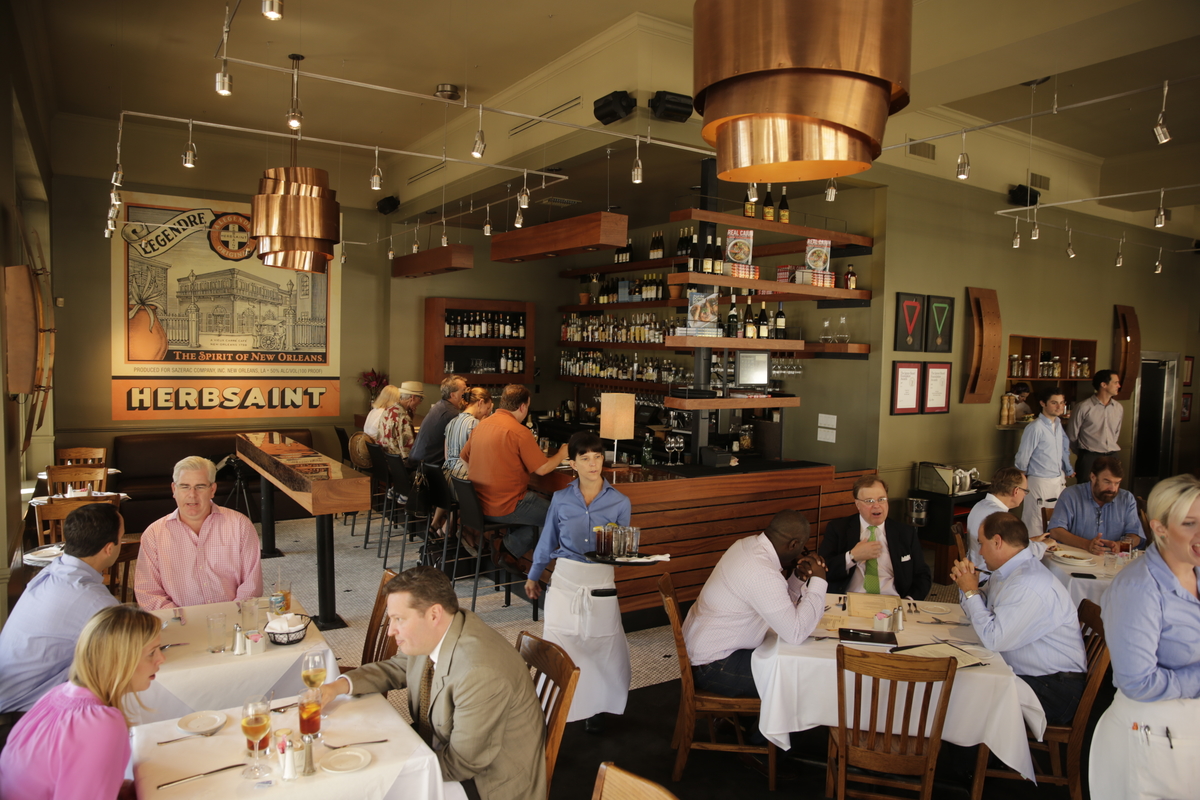
701 St.
Charles Street
504-524-4114
I put Donald Link in with chefs like Mike Lata
of Fig in Charleston, Steven Satterfield of
Miller Union in Atlanta and Frank Stitt III of
Highlands Bar & Grill in Birmingham who have
truly changed the way Southern food is regarded
in their cities.
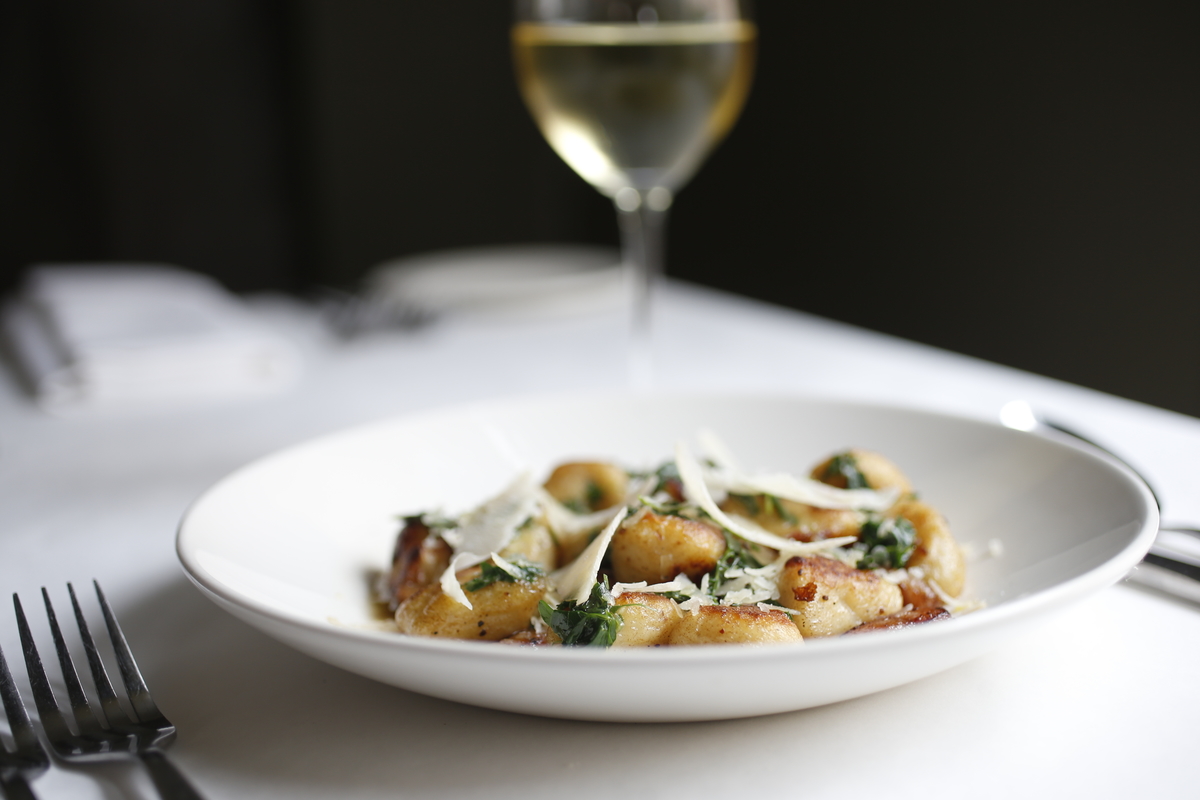 When Link
opened Herbsaint more than a decade ago, he not
only went beyond the entrenched clichés of Creole
cuisine, but he lightened things up and brought in
global influences, not least French and Italian
notes.
When Link
opened Herbsaint more than a decade ago, he not
only went beyond the entrenched clichés of Creole
cuisine, but he lightened things up and brought in
global influences, not least French and Italian
notes.
The restaurant itself has
always been one of the cheeriest and brightest,
with olive, yellow and white colors throughout,
big windows on the corner, a nice small bar and a
small peek into the kitchen. Alas,
like Link’s other restaurants, Cochon and Pȇche,
Herbsaint can get very very loud, piped in music
included, so go early or late (as noted,New
Orleans restaurants start to empty by 9 p.m.), and
you’ll probably get a window seat.
Then tuck into Chef de Cuisine
Rebecca Wilcomb’s sumptuous dishes like an
excellent duck and andouille gumbo (below; $8)
and some of the small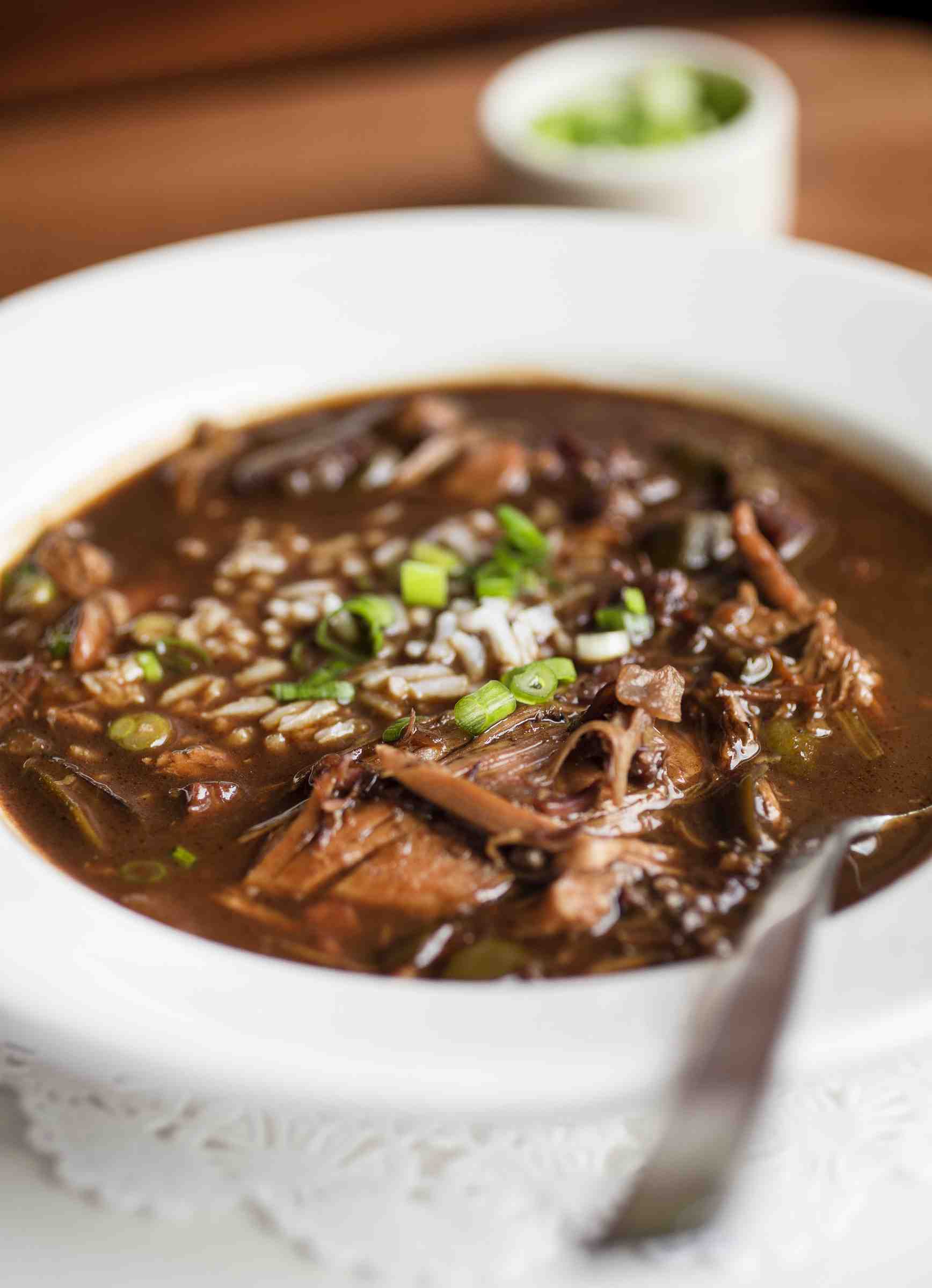 plates,
like marvelously lusty beef short rib with roesti
potatoes and horseradish cream ($15), or baked
asiago cheese with a sprinkling of oregano and a
touch of lemon ($11) to slather on warm country
bread. Gnocchi (left)
with tomato, pancetta
and purple hull peas ($14) is a bit overwrought;
the spaghetti with guanciale ham and a
fried-poached egg ($14) is a better choice as
pasta.
plates,
like marvelously lusty beef short rib with roesti
potatoes and horseradish cream ($15), or baked
asiago cheese with a sprinkling of oregano and a
touch of lemon ($11) to slather on warm country
bread. Gnocchi (left)
with tomato, pancetta
and purple hull peas ($14) is a bit overwrought;
the spaghetti with guanciale ham and a
fried-poached egg ($14) is a better choice as
pasta.
For entrees there’s always a
fish of the day, simply prepared, and I most
recently favored jumbo shrimp callaloo with
tomato-chili vinaigrette and crispy rice ($29),
and the very rich, slowly roasted kurobuta pork
belly with bacon-braised field peas and pickled
chilies ($28). It was also good to see fideo, a
Spanish thin pasta dish cooked in broth with a
tomato confit ($9),
as a side dish.
For
dessert you won’t go wrong with any ($8-$9):
coconut custard pie with buttermilk Chantilly and
orange caramel, a brown butter banana tart, and
especially a malted milk chocolate mousse with
malted crème anglaise. Consider one of the many
dessert wines suggested on the menu with these
sweets.
Open for lunch Mon.-Fri., dinner nightly.
 GALATOIRE'S
GALATOIRE'S
209 Bourbon Street
504-525-2021
I’ve been having an annual lunch
at Galatoire’s for some time now, but with
nothing like the fidelity of its local
clientele, who may stretch back generations, as
do some of the staff at this marvelous old,
splendidly refurbished Creole restaurant. Chef
Michael Sichel maintains a kitchen of remarkable
consistency, keeping all the old items on the
menu and adding new ones according to what swims
into the market.
Galatoire’s is a
mystical place in the hearts of many New
Orleanians whose families have been coming here
since French immigrant Jean Galatoire opened up on
Bourbon Street in 1905. It’s a tradition to
stand outside on Friday at lunchtime minutes or
hours before opening, and, despite the heat of
summer, women dress in pastel linen and men in
seersucker, bow ties and white panama hats abound.
(They take reservations for the upstairs dining
room.) But on other days and nights of the week,
it’s not nearly  so tough to get a table,
which is when I like to go.
so tough to get a table,
which is when I like to go.
What changes there are at
Galatoire’s are subtle—some new waiters on the
floor, the pacing is a bit faster, the wine list
much better than it used to be. But when you sit
down you still get a bottle of ice water, hot
French bread and a generous slab of butter, all to
be replenished throughout your meal.
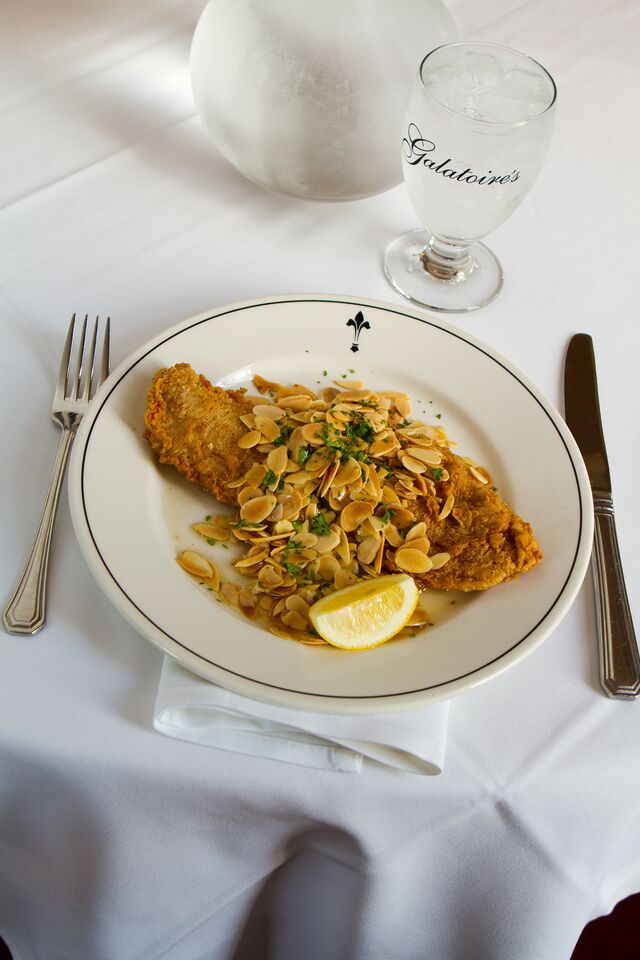 There are few flourishes
in the plates, just straightforward traditional
dishes that include soufflé potatoes with
Béarnaise sauce to nibble on as a starter ($7.50),
spicy, cold shrimp remoulade ($13) and one of my
favorite items, sweetbreads with a lemon caper
beurre blanc ($11). The day’s catch, whether it’s
trout, sole, grouper or pompano, can be enhanced
with a mound of jumbo lump crabmeat. The
redfish with almonds ($25) is something I never
fail to order if it’s on the menu, lush with lemon
caper butter (left).
There are few flourishes
in the plates, just straightforward traditional
dishes that include soufflé potatoes with
Béarnaise sauce to nibble on as a starter ($7.50),
spicy, cold shrimp remoulade ($13) and one of my
favorite items, sweetbreads with a lemon caper
beurre blanc ($11). The day’s catch, whether it’s
trout, sole, grouper or pompano, can be enhanced
with a mound of jumbo lump crabmeat. The
redfish with almonds ($25) is something I never
fail to order if it’s on the menu, lush with lemon
caper butter (left).
The creamed spinach ($6) is
always a mushy, creamy joy, the garlicky Brabant
potatoes ($5) a winner, too. For dessert the bread
pudding is not fancy but it’s good, as is the
sweet potato cheesecake with spiced pecans and
chocolate shavings ($8.50).
People
tend to linger at Galatoire’s, some right through
lunch and then into dinner, but no one ever eats
and runs at a place designed to keep you in your
seat by lulling you into becoming very mellow very
quickly.
Open Tues.-Sun. for lunch and
dinner.
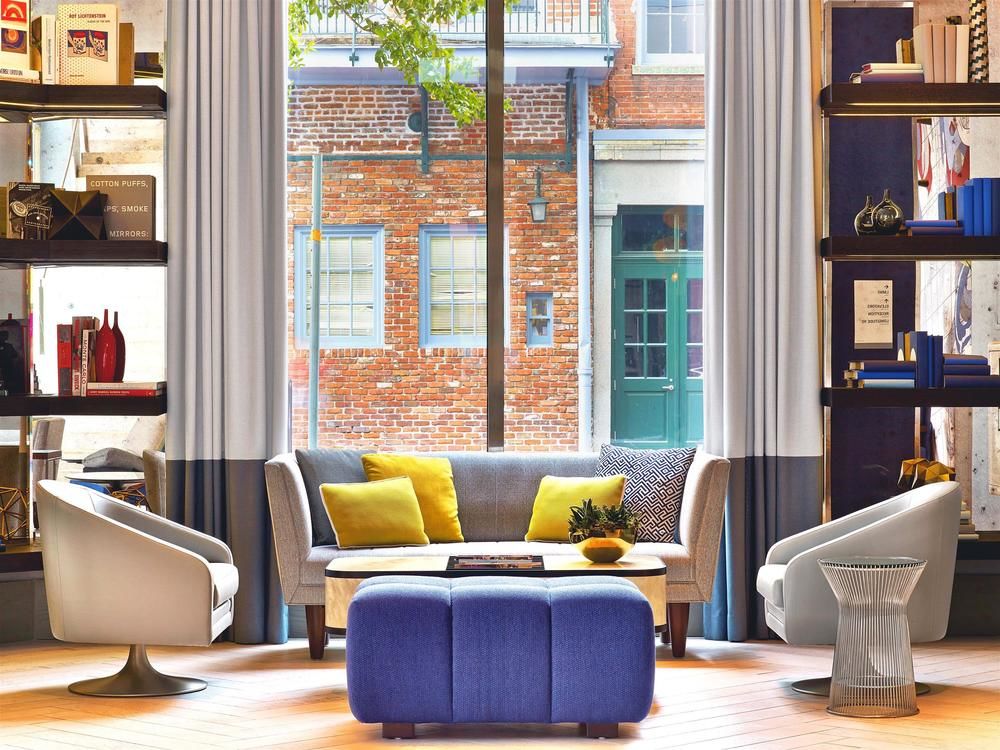
In recent visits I’ve become comfortable checking
into Le
Meridien New Orleans on Poydras Street,
whose $29 million transformation makes it
the most modern hotel in the city, and its
location outside the Quarter and main thoroughfare
makes for far easier access and egress. The
lobby is striking, styled around bookcases filled
with an amazing array of art and style books, and
there is a little café counter where you can get
breakfast or drinks, as well as a restaurant named
LMNO.
My suite, done in
pastel shades of gray and white, overlooked the
city and the Mississippi, and had a
well-stocked in-room bar area, and fine amenities
throughout, especially the work space area and
electric outlets and WiFi accessible units. The
bathrooms are very large and very well lighted and
equipped, and I’ve found the service staff gets
better and better.
By John Mariani
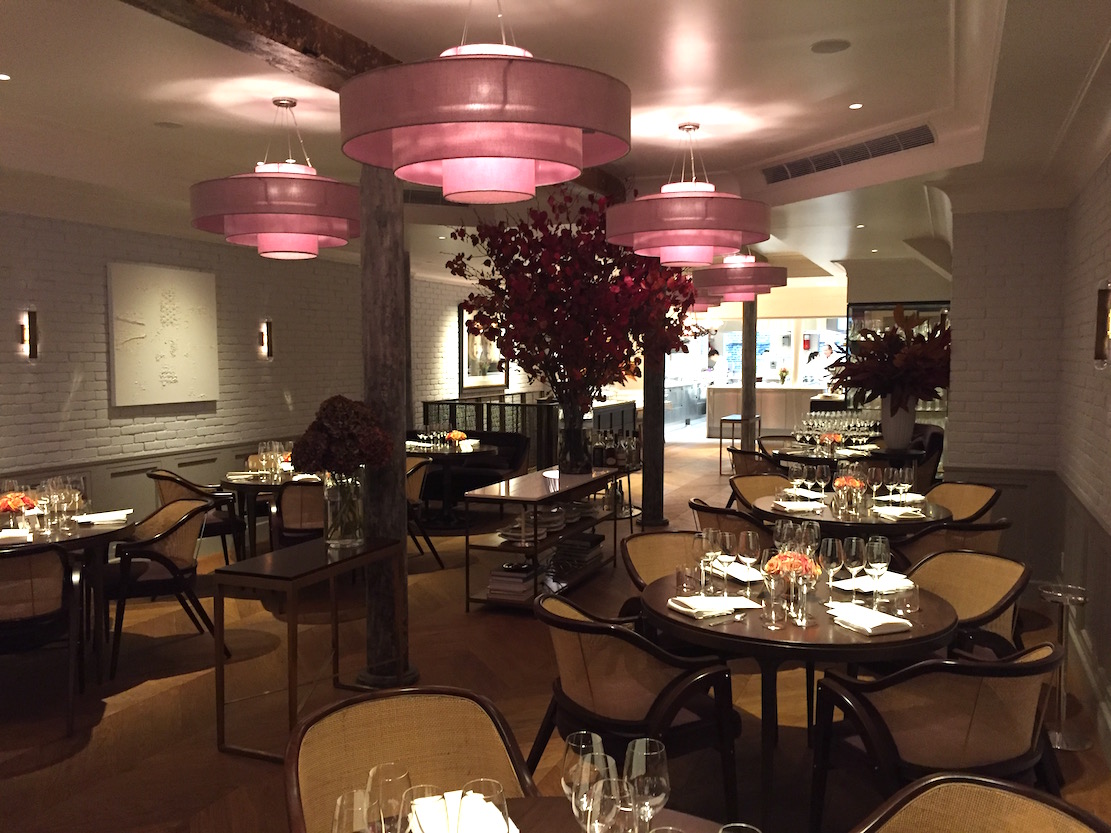 Günther
Seeger
Günther
Seeger 641 Hudson Street
(near Gansevoort Street)
646-657-0045
Long before Mario Batali, David
Chang, Daniel Humm, even before Eric Ripert,
Günther Seeger had a well-earned and
well-established reputation as one of
America’s finest, most inventive chefs. But
unlike those other NYC-based chefs, Seeger
made his indelible mark in Atlanta, first at
the Ritz-Carlton, Buckhead, then independently
under his own name, which was my pick in Esquire
as Restaurant of the Year in 1998. 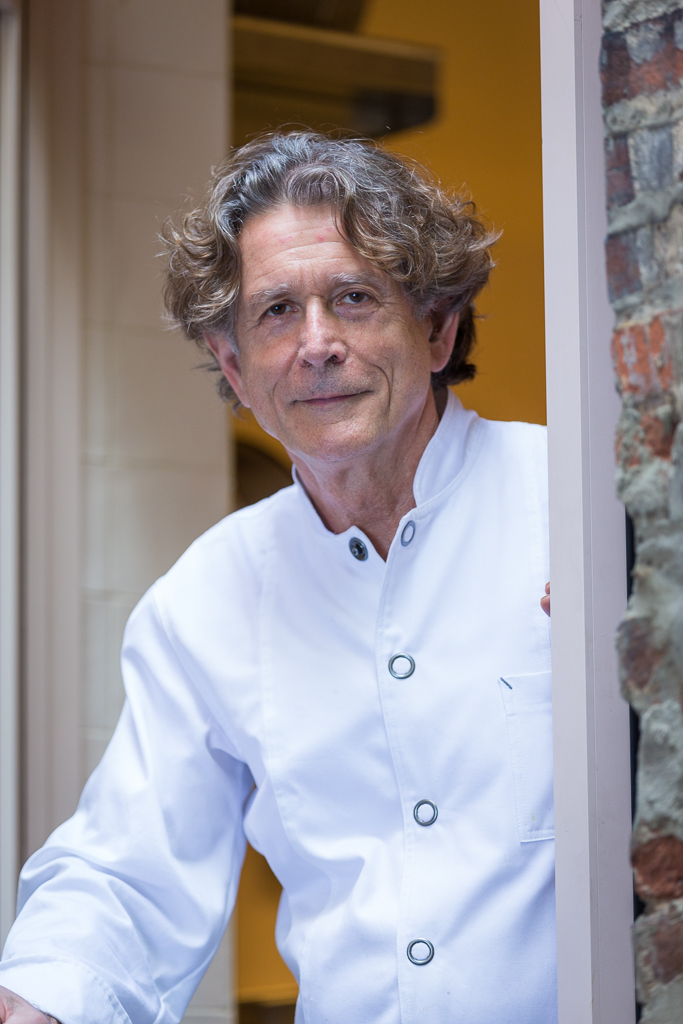
Born and raised in
Germany’s Black Forest, Seeger arrived in
Atlanta in 1985, a city whose most prominent
restaurants of the time included a slew of
continental old-timers, The Abbey, where staff
wore monk’s habits, and Nikolai’s Roof, a
Russian restaurant where everything was flamed
on skewers.
Seeger’s introduction of nouvelle
cuisine was widely praised, but his
insistence on long tasting menus made dining at
his restaurants something
of a slog.
After leaving Atlanta behind
in 2007, he did consulting out of NYC, but there
was never any doubt he would one day assert
himself in the Big Apple. Opened
last
summer, Günther Seeger NY just won its first
Michelin star.
The NYC food media, however, were not so
inclined, finding the nine-course $185 tasting
meal—no à la carte--off-putting and the service
pretentious.
Staff would boast of having Iranian
caviar, when it actually came from China. By
summer’s end, any novelty the place had had wore
off, and few were the nights the dining room
filled up.
As stubborn as Martin Luther at
the start, Seeger saw the need to modulate, this
fall instituting a four-course menu a very
reasonable $98, and there’ll probably be some
additional amuses
when you sit down. A ten-course menu is also
offered at a lower priced $148 + $125 for wines
+ tax + tip.
I found the West Village
dining room quite beautiful, with a bright open
kitchen to the rear where Seeger works intensely
with his crew.
The room is stark, with blond wooden
floors, softened by a lovely chandelier said to
be Seeger’s grandmother’s and more modern ones
glowing pink; huge
vases of flowers may put you in mind of La
Grenouille, wooden beams and columns echo
Seeger’s Black Forest childhood, and you’ll sit
down on very comfortable chairs and banquettes. Glassware
is exquisitely thin. Alas, there are no
tablecloths, and if the room fills up, it will
get loud.
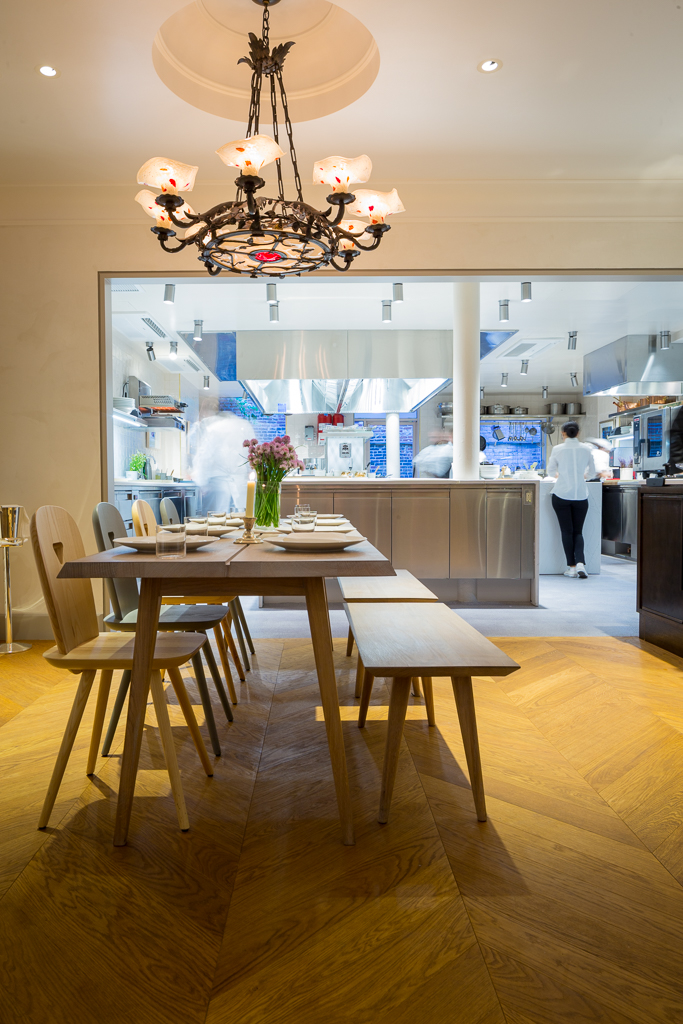 The charge that
Seeger’s service staff is pretentious is
nonsense: They are a cadre of very well-dressed,
slender young professionals with very good
manners indeed, friendly and knowledgeable about
both food and wine. The wine list, pricey as
you’d expect, is one of the few in NYC that
features German labels of excellent provenance.
The charge that
Seeger’s service staff is pretentious is
nonsense: They are a cadre of very well-dressed,
slender young professionals with very good
manners indeed, friendly and knowledgeable about
both food and wine. The wine list, pricey as
you’d expect, is one of the few in NYC that
features German labels of excellent provenance.
Since there are two
selections for each of the four courses, my wife
and I ate them all, along with a luscious amuse of
delicately steamed egg with a maple Chantilly
cream and bottarga
roe that gave it pleasing salty edge. Abalone
was quickly seared on a hibachi, giving it a
slightly smoky taste, then put back in the shell
with maitake
mushrooms, dashi
and sea lettuce, though the broth it swam in was
fairly bland. Silky foie gras
took on the sweetness of poached plum and onion
marmalade, two components that showed as much
finesse as any other ingredient, and I’ve never
had better prepared trout, with horseradish and
apple, a dish that clearly derives from Seeger’s
German background.
Another appetizer was a brown
paper mat heaped with little, buttery ratte
potatoes with Burgundy truffle, but there is the
option of adding $75 to your bill if you want a
few shavings of white truffle. Next
time I’ll stick to the black.
Simplicity
is key to Seeger’s cooking—nothing is ever
extraneous on the plate—so you get the full
flavor of fat grilled quail, impeccably rosy,
with Japanese leek and dates. The
real disappointment of the night was veal
schnitzel, which, given Seeger’s DNA, should
have has skin as crispy as the best Southern
fried chicken but was instead limp and separated
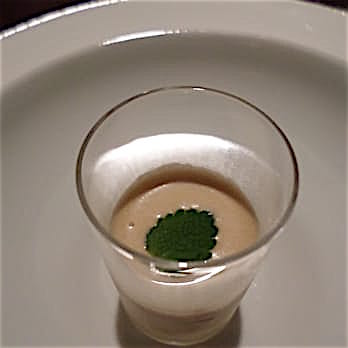 from the veal. A
single carrot and some ginger did nothing to
remedy its shortcomings.
from the veal. A
single carrot and some ginger did nothing to
remedy its shortcomings.
For dessert you have a choice
of Red Cow Parmesan with quince jus (these
and other dishes change frequently), a pleasing
apple tarte Tatin with cranberry sorbet, or a
rich hazelnut crèmeux with
delightful
peppermint ice cream. Frankly, after four
courses like these I cannot imagine going for a
ten-course dinner, even if it had smaller
portions.
Though Seeger’s cooking has
never been flamboyant, it is now more restrained
and focused, not dissimilar to certain aspects
of Japanese cooking, and, within the white brick
walls and soft lights, it all seems a very
personal expression of the man, whose once
doctrinaire approach has softened into a real
desire to please his guests. “We want to get
better and better and better,” he told me after
dinner, and for a chef of his caliber, that is a
promise he will keep.
Open for dinner
Mon.-Sat.
❖❖❖
NAPA VALLEY PIONEER
By Mort Hochstein
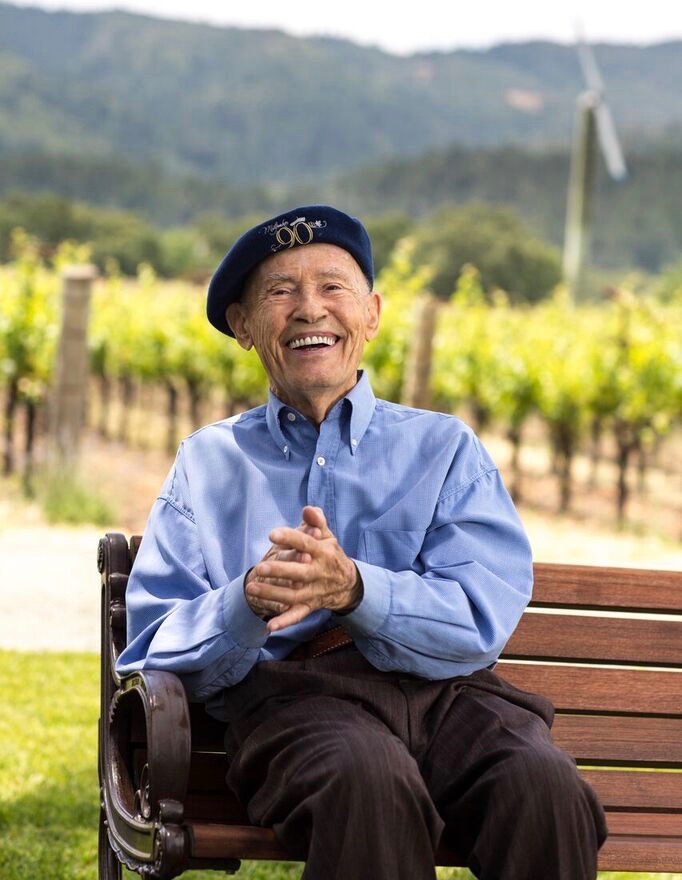
If
you follow California wines, you’re familiar
with the Judgment of Paris of 1976, the
historic, first blind tasting of American
wines against the great names of France. Nine
judges, all French, gave American wines top
honors for Cabernet Sauvignon and
Chardonnay, and occasionally mistook French
wines for their American competitors. The
French were embarrassed. The startling
results of that promotional event
laboriously assembled by wine merchant
Stephen Spurrier (left), put California
wines on the map, and served as inspiration
for winemakers throughout the world.
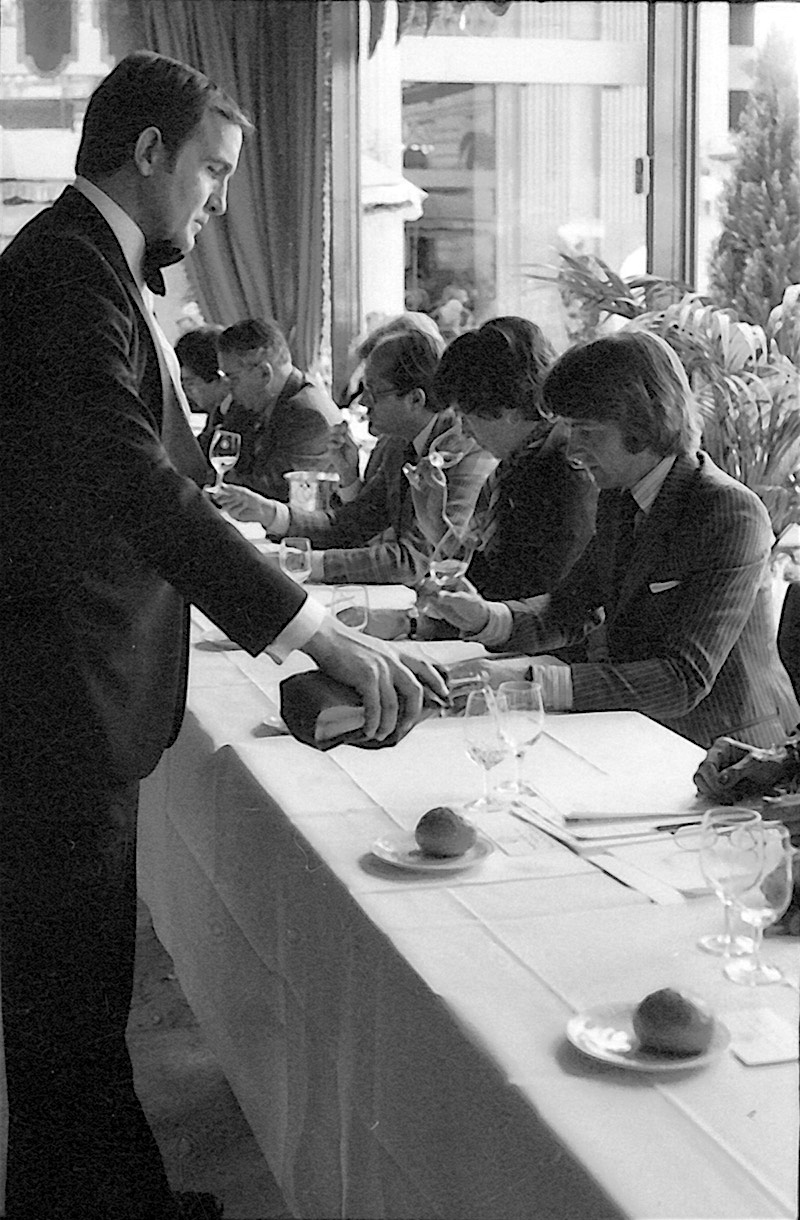
Photo: Bella Spurrier
The Judgment of Paris gave recognition to a
sleeping giant, the American wine industry, and
the story was told in 2008, in Hollywood fashion,
in the movie “Bottle Shock.” The film focused on
Jim Barrett and his slacker son, Bo, at Château
Montelena, whose 1973 Chardonnay was the big
winner in Paris. While the film paid a lot of
attention to the differences between father and
son, it gave very little attention to the man who
crafted that winning Chardonnay for Montelena,
Miljenko “Mike” Grgich, a humble immigrant from
Croatia.
Grgich’s life would make a more interesting
story. He was the last of 11 children in a family
of impoverished peasant farmers in a small
village. Wearing hand-me-down clothes and often
going hungry, with only a smattering of schooling,
Grgich spent his earliest years tending sheep and
crushing grapes with his feet for the family’s
wine. At age 14, he was running a small grocery
store when communists ravaged the village and
confiscated his stock. In 1943, scrambling for a
route toward a career in a free land, he saw that
the communists employed many bookkeepers, and made
his move. Grgich attended business school in
Zagreb, and worked for a year behind a desk,
quitting after he formulated another plan. He
signed on for the enology program at the
University of Zagreb, looking toward becoming a
winemaker in California, his promised land.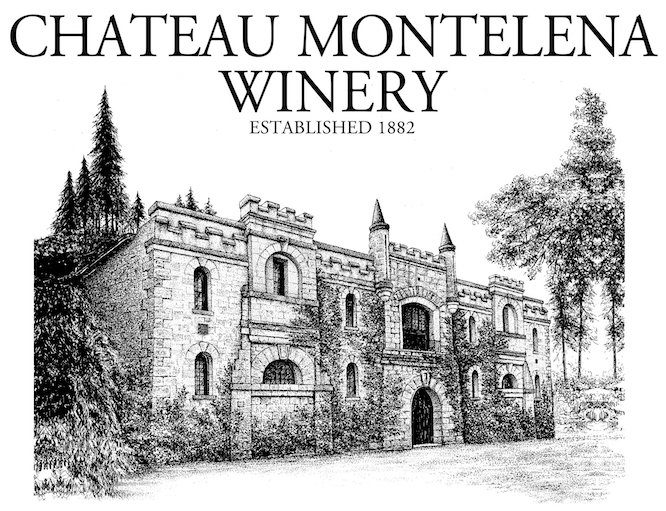
In 1954
he applied to study plant genetics in West
Germany, which was his way of getting out of
Communist Croatia. He crossed the border in fear
with five dollars stitched into the soles of his
shoes to escape confiscation and possible
imprisonment for smuggling cash out of his
homeland. He purposely overstayed his visa until
the West German government interred him in a
refugee camp. The farmer, whose land he had worked
as a student, paid for his release and he went
back into the fields as a laborer for nearly two
years. After two years of frustration, he
abandoned his efforts to win a U.S. visa and
instead applied for work as a lumberjack in
Canada, where it was easier to obtain papers. He
worked several years in a variety of menial jobs
until a relative, a Canadian priest, advised him
to contact the Christian Brothers winery in
California. That move linked him with Lee Stewart
at the small Souverain winery in Napa who sent him
the letter
of employment he needed to earn that treasured
American visa.
Finally in his promised land,
Grgich was on his way, with tattered clothes,
little cash, and a bare room in a barren hotel.
The Souverain job led him to Robert Mondavi, where
all his training enabled him to become a trusted
aid to that California icon, who had just built a
showcase winery. Mondavi gave Grgich great
responsibility and encouragement to polish his
winemaking skills, but warned him that the prime
positions were reserved for his sons.
Grgich produced the 1969 Mondavi Cabernet
Sauvignon, a highly regarded wine that enhanced
his reputation and this prompted a financially
rewarding offer from Jim Barrett at Château
Montelena, a much smaller winery. Mondavi gave
Grgich his blessing to move on and promised that
he could always return.
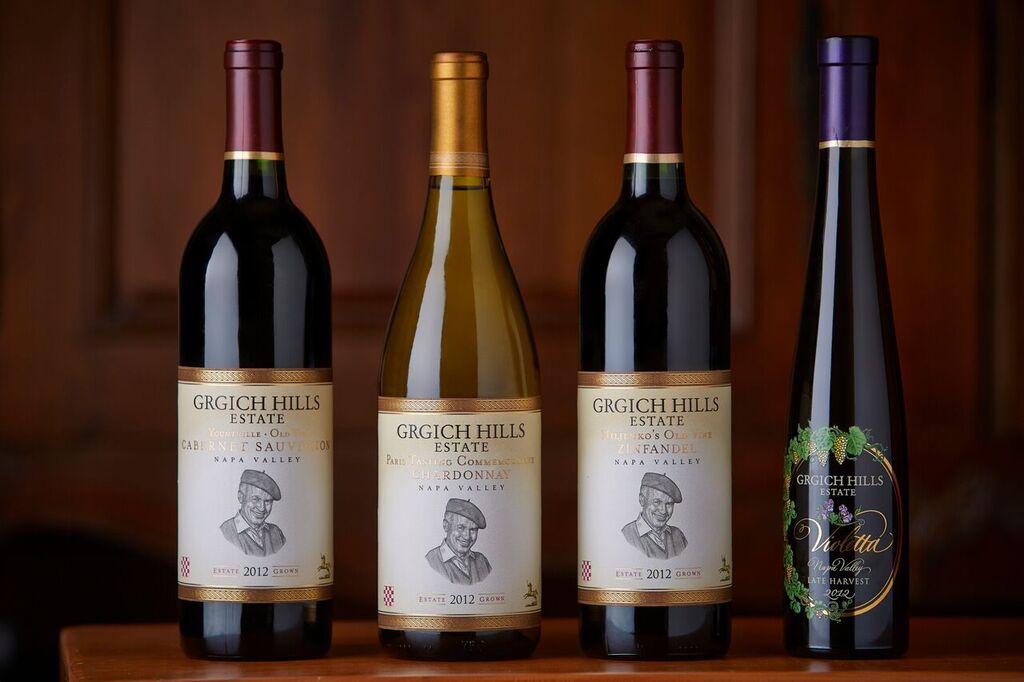 Barrett asked Grgich to develop a
business plan for a winery to produce world class
Cabernet Sauvignon. Grgich advised Barrett that a
red wine would produce no income for five years
and wrote a program to include white wines that
would yield more immediate cash flow. This was the
basis for Montelena’s award-winning 1972
Chardonnay and the historic 1973, which cemented
the winery’s status.
Barrett asked Grgich to develop a
business plan for a winery to produce world class
Cabernet Sauvignon. Grgich advised Barrett that a
red wine would produce no income for five years
and wrote a program to include white wines that
would yield more immediate cash flow. This was the
basis for Montelena’s award-winning 1972
Chardonnay and the historic 1973, which cemented
the winery’s status.
A winery of his own was now possible and
the once penniless immigrant realized his dream,
founding Grgich Cellars and picking up accolades
as the king of Chardonnay, while creating a
battery of classic red and white wines. A bottle
of the
1973 Chardonnay was enshrined in the
Smithsonian Institution as one of “101 Objects
That Made America,” ranking along with such icons
as Abraham Lincoln’s hat, Alexander Graham Bell’s
telephone and Neil Armstrong’s space suit.
Grgich,
at 93, remains active in the winery, which his
daughter Violet now directs. Together
they published his dramatic memoir, A Glass Full
of Miracles.
In New York recently she showed his 40th
anniversary Napa Valley Chardonnay ($50) and
several other wines. It’s a totally elegant,
limited example of his art, crisp with apple and
pear flavors and strong, but not overpowering,
acidity. The
2013 Chardonnay ($43), which also was on the
table, was equally classical, though slightly more
mineral in composition, with peach, mango and
tropical flavors.
Grgich had been instrumental in formulating
Mondavi’s Fumé Blanc, so named when the producer
felt Americans might not be comfortable
pronouncing Sauvignon Blanc. Rich in aromatics,
Grgich Fumé ($31) is high in tropical fruit
flavors and lemongrass ones and matches well with
everything from fish to cold veggies and roasted
beet salad, a dish served at the presentation. On
the red side, we enjoyed his 2012 Cabernet
Sauvignon ($185) based on vines planted in the
late 1950s, among the oldest in
Napa. It is a wine of concentrated intense flavor,
well balanced, with flavors of blackberries and
black licorice and a rich, lingering finish.
❖❖❖
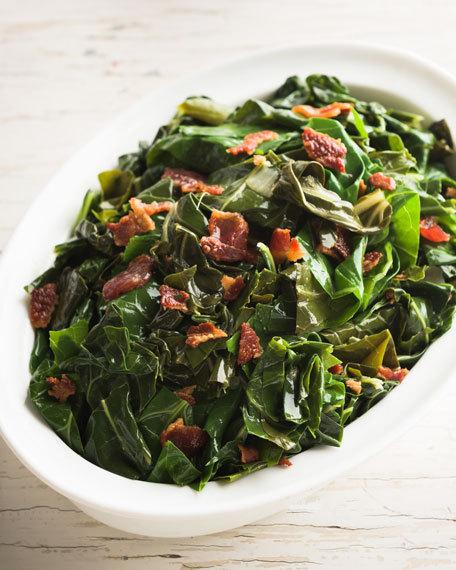
of frozen collard
greens seasoned
with “just the right amount
of spices and bacon” (left) for $66 + $15.50
in shipping, and IT SOLD OUT!
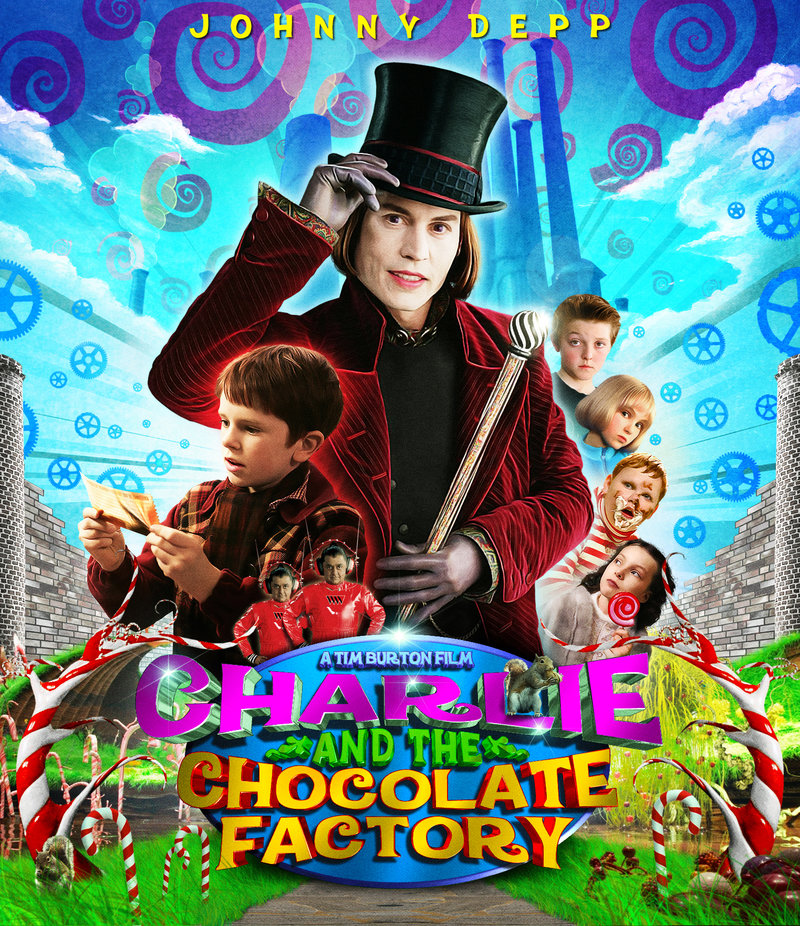
The Oxford
English Dictionary has added "scrumdiddlyumptious"
to
approved new words, as meaning "extremely
scrumptious; excellent,
splendid; (esp. of food) delicious." The colloquialism
derives from
Roald Dahl's Charlie and
the Chocolate Factory.
Any of John Mariani's books below may be ordered from amazon.com.
 The
Hound in Heaven (21st Century Lion Books)
is a novella, and for anyone who loves dogs,
Christmas, romance, inspiration, even the supernatural, I
hope you'll find this to be a treasured favorite.
The story concerns how, after a New England teacher,
his wife and their two daughters adopt a stray puppy found
in their barn in northern Maine, their lives seem full of
promise. But when tragedy strikes, their wonderful dog
Lazarus and the spirit of Christmas are the only things
that may bring his master back from the edge of
despair.
The
Hound in Heaven (21st Century Lion Books)
is a novella, and for anyone who loves dogs,
Christmas, romance, inspiration, even the supernatural, I
hope you'll find this to be a treasured favorite.
The story concerns how, after a New England teacher,
his wife and their two daughters adopt a stray puppy found
in their barn in northern Maine, their lives seem full of
promise. But when tragedy strikes, their wonderful dog
Lazarus and the spirit of Christmas are the only things
that may bring his master back from the edge of
despair. WATCH THE VIDEO!
“What a huge surprise turn this story took! I was completely stunned! I truly enjoyed this book and its message.” – Actress Ali MacGraw
“He had me at Page One. The amount of heart, human insight, soul searching, and deft literary strength that John Mariani pours into this airtight novella is vertigo-inducing. Perhaps ‘wow’ would be the best comment.” – James Dalessandro, author of Bohemian Heart and 1906.
“John Mariani’s Hound in Heaven starts with a well-painted portrayal of an American family, along with the requisite dog. A surprise event flips the action of the novel and captures us for a voyage leading to a hopeful and heart-warming message. A page turning, one sitting read, it’s the perfect antidote for the winter and promotion of holiday celebration.” – Ann Pearlman, author of The Christmas Cookie Club and A Gift for my Sister.
“John Mariani’s concise, achingly beautiful novella pulls a literary rabbit out of a hat – a mash-up of the cosmic and the intimate, the tragic and the heart-warming – a Christmas tale for all ages, and all faiths. Read it to your children, read it to yourself… but read it. Early and often. Highly recommended.” – Jay Bonansinga, New York Times bestselling author of Pinkerton’s War, The Sinking of The Eastland, and The Walking Dead: The Road To Woodbury.
“Amazing things happen when you open your heart to an animal. The Hound in Heaven delivers a powerful story of healing that is forged in the spiritual relationship between a man and his best friend. The book brings a message of hope that can enrich our images of family, love, and loss.” – Dr. Barbara Royal, author of The Royal Treatment.
 |
The Encyclopedia of American Food and Drink by John F. Mariani (Bloomsbury USA, $35) Modesty forbids me to praise my own new book, but let me proudly say that it is an extensive revision of the 4th edition that appeared more than a decade ago, before locavores, molecular cuisine, modernist cuisine, the Food Network and so much more, now included. Word origins have been completely updated, as have per capita consumption and production stats. Most important, for the first time since publication in the 1980s, the book includes more than 100 biographies of Americans who have changed the way we cook, eat and drink -- from Fannie Farmer and Julia Child to Robert Mondavi and Thomas Keller. "This book is amazing! It has entries for everything from `abalone' to `zwieback,' plus more than 500 recipes for classic American dishes and drinks."--Devra First, The Boston Globe. "Much needed in any kitchen library."--Bon Appetit. |
"Eating Italian will never be the same after reading John Mariani's entertaining and savory gastronomical history of the cuisine of Italy and how it won over appetites worldwide. . . . This book is such a tasteful narrative that it will literally make you hungry for Italian food and arouse your appetite for gastronomical history."--Don Oldenburg, USA Today. "Italian
restaurants--some good, some glitzy--far
outnumber their French rivals. Many of
these establishments are zestfully described
in How Italian Food Conquered the World, an
entertaining and fact-filled chronicle by
food-and-wine correspondent John F.
Mariani."--Aram Bakshian Jr., Wall Street
Journal.
"Equal parts
history, sociology, gastronomy, and just
plain fun, How Italian Food Conquered the
World tells the captivating and delicious
story of the (let's face it) everybody's
favorite cuisine with clarity, verve and
more than one surprise."--Colman Andrews,
editorial director of The Daily
Meal.com. "A fantastic and fascinating
read, covering everything from the influence
of Venice's spice trade to the impact of
Italian immigrants in America and the
evolution of alta cucina. This book will
serve as a terrific resource to anyone
interested in the real story of Italian
food."--Mary Ann Esposito, host of PBS-TV's
Ciao
Italia. "John Mariani has written the
definitive history of how Italians won their
way into our hearts, minds, and
stomachs. It's a story of pleasure over
pomp and taste over technique."--Danny Meyer,
owner of NYC restaurants Union Square
Cafe, The Modern, and Maialino.
|
 |
 |
 |
 |
 |
 |
 |
 |
 Everett Potter's Travel Report:
Everett Potter's Travel Report: 
 Eating Las Vegas
JOHN CURTAS has been covering the Las Vegas
food and restaurant scene since 1995. He is
the co-author of EATING LAS VEGAS – The 50
Essential Restaurants (the fourth
edition of which will be published in early
2016), as well as the author of the Eating Las
Vegas web site: www.eatinglasvegas.
He can also be seen every Friday morning as
the “resident foodie” for Wake Up With the
Wagners on KSNV TV (NBC) Channel 3 in
Las Vegas.
Eating Las Vegas
JOHN CURTAS has been covering the Las Vegas
food and restaurant scene since 1995. He is
the co-author of EATING LAS VEGAS – The 50
Essential Restaurants (the fourth
edition of which will be published in early
2016), as well as the author of the Eating Las
Vegas web site: www.eatinglasvegas.
He can also be seen every Friday morning as
the “resident foodie” for Wake Up With the
Wagners on KSNV TV (NBC) Channel 3 in
Las Vegas.

MARIANI'S VIRTUAL GOURMET
NEWSLETTER is published weekly. Editor/Publisher: John
Mariani.
Editor: Walter Bagley. Contributing Writers: Christopher Mariani,
Robert Mariani, Misha Mariani, John A. Curtas, Mort Hochstein, and Brian Freedman. Contributing
Photographers: Galina Dargery. Technical
Advisor: Gerry
McLoughlin.
To un-subscribe from this newsletter,click here.
© copyright John Mariani 2016

